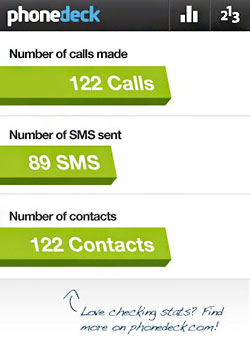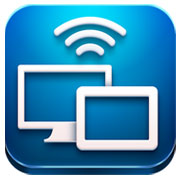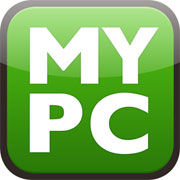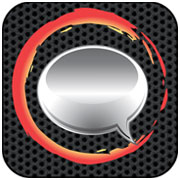
![]()
Phonedeck, an app from Desk.io, is available for free at Google Play. If there’s been a common thread to some of the recent “How To” articles I’ve written for Technewsworld and my Android app reviews for LinuxInsider, it might be the taming of the ever-proliferating devices that are taking over my living space.
I seem to be collecting things at an alarming rate — so much so, that I had to make a run to IKEA recently to buy a bigger coffee table, as the infestation of black plastic objects was starting to take over the sofa too.
Is the miniaturization of electronics allowing us to live in ever-smaller dwellings? In my case, I don’t think so. I need to get rid of some of these things — at least move them out of my field of vision — or, more importantly, my girlfriend’s.
What if I could just leave the phone by the front door at its charging station and concentrate on laptops and such to manage the phone? I hardly ever talk on it anyway these days, communicating predominantly by email and social media.
What I think I need is a cloud-based desktop for my mobile phone. And here’s where I had hoped Phonedeck would come in.
The Pitch
Managing your mobile phone remotely is Phonedeck’s pitch. It aims to track your texts and calls, plus — and importantly — it claims to be able to let you manage your phone book remotely.
If you are like me, and your phone book is spread across Microsoft Outlook clients, Facebook, Google Gmail and more, this could be a good thing.
The Installation
Installing the app involved following the usual Google Play procedures. There is a requirement to open an account after install that allows synchronization to occur between the Android phone and the cloud.
Installing the app on a PC’s Chrome browser is supposed to provide additional features not available on other browsers, like incoming call notifications
Chrome Phonedeck Extension
To be fair to Phonedeck, because clearly it’s an important element, I continued testing using Chrome with Phonedeck’s extension installed rather than my usual Firefox PC browser.
After verifying the app was installed on the phone, and that the PC could connect to the cloud account, I walked over to my charging station with the phone, connected the phone, and removed the phone from play.
Phonedeck’s Website
Accessing the Phonedeck website by browsing to it with a PC and logging in provides a dashboard that includes tabs for Activities, Contacts and Insights.

I was keen to try the Contacts tab and test any import functions for phone books, of which there were none — adding a contact involves manually entering it.
Google’s native Android clients have more functionality than that. Although Phonedeck promises social network importing, it currently offers just Linkedin.
Phonedeck Activities
The Activities section, in addition to a comprehensive call and SMS list, offers missed, outgoing and incoming calls lists.
It allows sending texts via the phone, which I was able to successfully do. I sent an SMS text from the PC browser with the phone’s Caller ID.
Making Calls
Initiating a phone call wasn’t so successful, because Phonedeck didn’t let me initiate and then continue the call on the PC.
I had to go over to the phone and continue the conversation using the phone. That did work, however.
Buggy Notifications System
Testing the incoming call notification resulted in no notification at all, until the point where I ended the conversation and hung up, whereupon a notification appeared on the Chrome open desktop.
A layer of information, including a map of the caller’s location and social network activity should show. It didn’t, but probably because my caller isn’t active in any location-sharing social media.
The call notification never ended, and would not close despite repeated clicks, and is in fact still on-screen showing as an active call as I write this article — eight minutes after my correspondent and I hung-up.
Neat tools include a graphical representation of the phone’s current battery status on the PC dashboard.
Interesting Insights
Less useful, probably, there is an analytics element called “Insights” that tracks the top five people you’ve called and the top five that have contacted you — likely the same people — plus average call length, and so on.
For me, these analytics equate with the usefulness of writing down the total number of people walking down the street over a period while sitting street-side at Starbucks. But, maybe someone can think of a reason why you would need this information — please let me know.
The dashboard also bizarrely gives you a total of the amount of times you’ve charged your phone.
In Conclusion
I’ll give these guys the benefit of the doubt for now because they’ve got a cool idea. However, they also have a lot of quality-of-service work to do.
While calling and texting via PC isn’t new, using the phone’s actual Caller ID and its consequent synchronization of text messages is unusual.
I like the idea of a PC-based phone dashboard, particularly one that can drill down into social network connections like this one is supposed to do.



















































